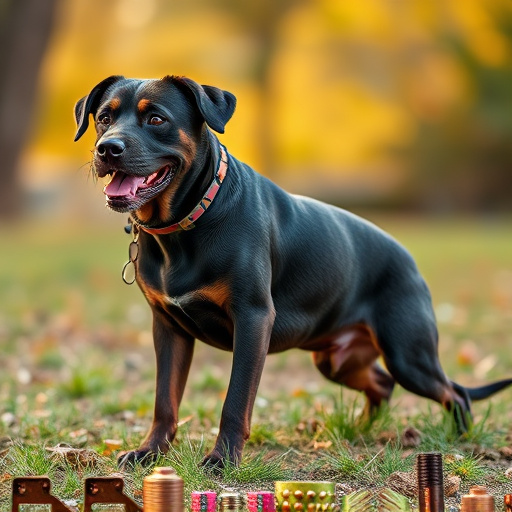Understanding the legalities and science behind pepper spray is vital for personal defense. While many areas permit civilian use with licensing, storage and shelf life regulations differ widely. Optimizing pepper spray's 2-3 year car shelf life requires cool, dry conditions, avoiding direct sunlight, and regular checks for expiration. Adhering to local laws regarding ownership, usage, and transport ensures legal compliance and effective self-defense in emergencies.
In today’s world, understanding self-defense options is paramount. Among them, pepper spray stands out as a powerful tool, but its legalities and effectiveness are subjects of ongoing debate. This article explores the intricate details surrounding mace dog spray legal defense, delving into crucial aspects like the science behind its potency, carry regulations, and strategic use in self-defense scenarios. By examining the pepper spray shelf life in cars and your rights, we equip readers with vital knowledge for informed decision-making.
- Understanding Pepper Spray Legalities and Your Rights
- The Science Behind Pepper Spray: Its Effectiveness and Shelf Life
- Carrying Pepper Spray Legally: What You Need to Know
- Building a Strong Defense: Strategies for Using Pepper Spray in Self-Defense
Understanding Pepper Spray Legalities and Your Rights
Understanding the legalities surrounding pepper spray, including its shelf life and usage, is crucial for anyone considering it as a personal defense tool. In many jurisdictions, carrying pepper spray for self-defense purposes is legal, but regulations vary widely from place to place. For instance, some regions permit only law enforcement agencies to use it, while others allow civilians with proper licensing. The Pepper Spray Shelf Life in Car is an essential consideration; it’s important to check local laws and ensure your spray is within its active period when carrying it in your vehicle.
Your rights as a pepper spray owner also vary by location. Some areas mandate specific storage requirements, while others have rules about when and where you can deploy the spray. It’s vital to familiarize yourself with these regulations not only for legal compliance but also for ensuring your safety and the effectiveness of your defense mechanism during an emergency.
The Science Behind Pepper Spray: Its Effectiveness and Shelf Life
Pepper spray, a powerful self-defense tool, has become a staple for many individuals seeking protection. Its active ingredient, capsaicin, is derived from chili peppers and is responsible for the burning sensation it induces when in contact with eyes, nose, and skin. The science behind its effectiveness lies in how capsaicin interacts with vanilloid receptors in the body, causing temporary disorientation and immobilization. This non-lethal force allows users to create a safe distance from potential threats.
In terms of pepper spray shelf life in car or other storage areas, proper handling is key to maintaining its potency. Typically, these aerosols are designed to last for several years, often labeled as having a shelf life of 3 to 5 years when stored correctly. Factors affecting this include temperature, humidity, and exposure to light. Keeping pepper spray sealed, cool, dry, and out of direct sunlight can significantly extend its useful life. Understanding the science behind these self-defense tools empowers individuals to make informed decisions regarding their personal safety.
Carrying Pepper Spray Legally: What You Need to Know
Carrying pepper spray legally is a right, but also comes with responsibilities. In many jurisdictions, it’s legal to possess and carry pepper spray for self-defense purposes, provided you have a valid reason and comply with specific regulations. Before considering carrying pepper spray, familiarize yourself with local laws regarding its use, storage, and transport.
When storing pepper spray in your car, remember that the pepper spray shelf life in a vehicle can be affected by temperature fluctuations. Extreme heat or cold can degrade the spray’s effectiveness over time. Keep your pepper spray out of direct sunlight and stored securely in an area where it won’t be exposed to extreme temperatures. Regularly check the expiration date and condition of your pepper spray, replacing it as needed to ensure its continued effectiveness when you need it most.
Building a Strong Defense: Strategies for Using Pepper Spray in Self-Defense
In building a strong defense involving pepper spray, understanding its shelf life is paramount, especially when stored in your car. Pepper spray’s effectiveness degrades over time, making its longevity a key factor in self-defense preparations. A common rule of thumb is that pepper spray retains its potency for approximately 2-3 years if stored properly. This means regular inspection and maintenance are crucial to ensure it remains viable when you need it most. Keeping your pepper spray in a cool, dry place within its original packaging can significantly extend its shelf life.
When employing pepper spray as a self-defense mechanism, strategic planning is essential. Positioning it easily accessible yet hidden can provide a split-second advantage during unexpected encounters. Additionally, familiarizing yourself with local laws regarding pepper spray ownership and usage is vital to avoid legal complications. Knowing when and how to deploy it effectively could make all the difference in deterring potential threats, underscoring the importance of proper storage and understanding its shelf life, particularly in easily accessible locations like your car.
In conclusion, while pepper spray can be a valuable tool for self-defense, understanding its legalities and effectiveness is paramount. Knowing the science behind its composition and shelf life, like the enduring pepper spray shelf life in car, is crucial for responsible ownership. Mastering the legal aspects of carrying it and employing strategic defense techniques can ensure its use remains within your rights and maximizes its potential as a deterrent. Stay informed, stay safe.
